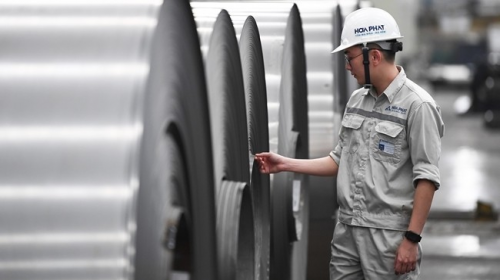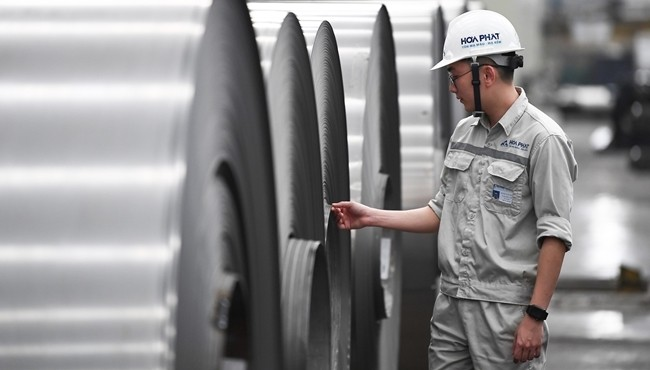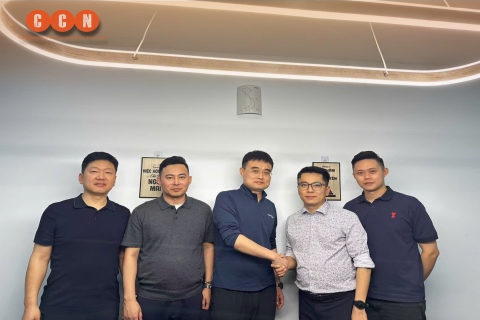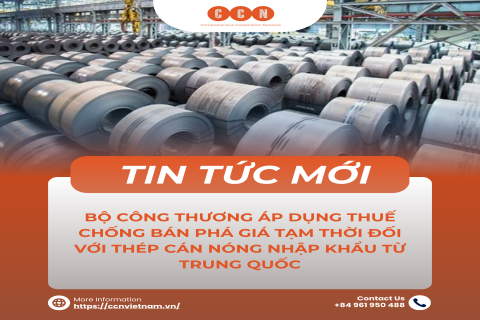Vietnam's Steel Industry Faces Pressure to Embrace Green Transition

The challenge of completing the green transformation by 2035 set by COP26 is being placed on the steel industry when there is too much pressure on time and technology investment...
Find the common voice
The global steel industry has been aiming for carbon neutrality by 2050, so in recent times, the Vietnamese steel industry has also gradually kept pace with innovation and made many great contributions. into the process of industrialization and modernization of the country and initially had remarkable results.
However, currently, the steel industry accounts for about 8% of total CO2 emissions worldwide. Therefore, the responsibility of the steel industry is to produce without using fossil fuels, thereby reducing carbon emissions in products.

Domestic steel manufacturing enterprises are required to convert production towards "green pressure" to improve competitiveness.
Photo: Hoa Phat Steel
According to the annual report of the Global Energy Monitor (GEM), the global iron and steel industry in 2023 has made great strides towards the goal of achieving net zero emissions.
One of the reasons for this success is that more low-emission electric arc furnace (EAF) steelmaking operations are coming online and entering the pipeline than ever before.
Accordingly, steel production using EAF technology accounts for 49% of total capacity announced or under construction, up from 43% in 2023 and 33% in 2022.
The GEM organization's report shows that there are two trends supporting this change. First, almost all newly announced steel production capacity follows the EAF production route (93%). This shows that electric arc furnace steel production will grow strongly in the coming years.
Second, planned capacity and plant shutdowns indicate a shift away from coal-based steel production. Specifically, global steel projects will account for an additional 171 million tons per annum (mtpa) of basic oxygen furnace (BOF) capacity, 310 mtpa of EAF capacity and 80 mtpa of capacity with undetermined technology.
If these development and decommissioning plans come into effect, global operating steel capacity will fall just below the International Energy Agency's (IEA) net-zero emissions target for 2030.
Now, the IEA has called for the 37% EAF mark to be reached by 2030. This is the first time since the launch of the global steel mill tracker that this milestone is fully achievable.
To implement Vietnam's commitments at COP26, ministries, branches and state agencies have been developing and implementing Vietnam's action plan to respond to climate change globally and a neutral roadmap. carbon of the industry and trade sector to 2030 - vision 2050.
According to Mr. Nghiem Xuan Da, Chairman of the Vietnam Steel Association (VSA), the Vietnamese steel industry has also made efforts to digitally transform, optimize technology, and use energy effectively. Some steel enterprises have taken advantage of residual heat to generate electricity to meet most of the factory's electricity needs to reduce negative impacts on the environment and initially had remarkable results.
From 2015 until now, the steel industry has had a breakthrough development and grown strongly to become the 13th crude steel producer in the world, leading ASEAN in the production and consumption of finished steel products. However, the steel industry is still responsible for 7-9% of total national emissions and 45% of industrial processes (identified in the national climate change strategy).
Therefore, Mr. Da said that Vietnam's steel industry needs to move towards a green growth strategy to achieve the goal of zero carbon emissions by 2050.
This is truly the biggest challenge for Vietnam's steel industry in the coming time, but at the same time it is also a great opportunity for the steel industry to innovate and modernize to become an industry with modern and advanced technology. Sustainable Development.
Green transformation is an inevitable trend
Recently, the Ministry of Industry and Trade has issued a Draft on the development strategy for Vietnam's steel industries to 2030, with a vision to 2045 to seek widespread comments from units, organizations and individuals.
After more than 10 years of planning implementation, along with the strong development of the country's economy, Vietnam's steel demand increases by double digits each year. Responding to that increase, steel production output of domestic enterprises increased sharply each year. Therefore, the development orientations of Vietnam's steel industry so far have not fully achieved some of the set goals, but there has been strong development, some results have been achieved in the industry such as rapid increase in steel output.
From the analysis of the above limitations, the Ministry of Industry and Trade believes that, in order to reach the Government's goal of net zero emissions by 2050, the development of the Vietnam Steel Industry Development Strategy to 2030, with a vision to 2045 plays a guiding role in helping state agencies and localities develop mechanisms and policies and mobilize resources to manage the development of the industry.
The strategy will help businesses operating in the steel industry build long-term and short-term plans, as well as product development strategies and business development investments in harmony with the industry's development.
Regarding improving competitiveness for steel industry enterprises, Mr. Do Nam Binh - Head of Metallurgical Minerals Department, Department of Industry (Ministry of Industry and Trade) said that iron and steel production is one of the industries most affected by metallurgy. major impact from the carbon border adjustment mechanism (CBAM). This policy will be piloted and applied transitionally from October 1, 2023. The CBAM mechanism is piloted by the European Union (EU) for a transition period from October 1, 2023 and fully implemented from 2026.
Currently, the EU is one of the top export markets of Vietnam's steel industry. According to the opinion, if Vietnamese steel enterprises do not respond well to CBAM, exports to the EU will be affected, with a greater risk of losing more markets.
In other words, these countries are considering adopting regulations similar to CBAM.
Therefore, Mr. Binh recommended that domestic steel manufacturing enterprises are required to convert production towards "greening" to improve competitiveness.
However, in reality, there is a big difference in price between green steel and gray steel. This directly affects the costs of consuming businesses. Therefore, representatives of some businesses hope that in this green transformation, the Government will have priority policies and support in the process of reducing emissions towards the goal of green and sustainable development; Help steel manufacturing businesses supply green steel products at prices suitable to the market. We know that any transition will be difficult at first, but the Government's cooperation and sharing will be an important driving force to promote the emission reduction process in Vietnam as well as globally, for the goal of reducing emissions in Vietnam and the world. bring benefits to the community and society.
Therefore, to achieve the goal of net zero carbon emissions by 2050, the steel industry needs to develop specific tasks and roadmaps in reducing steel industry emissions. There is certainly a long way to go to make green steel, requiring large human resources as well as technology and finance. "Green transformation is an irreversible trend, so businesses also need to prepare to be ready for the integration trend" - Mr. Binh said.
Contributing further comments, Mr. Phan Duc Hieu, Standing Member of the National Assembly's Economic Committee, said that policies to create a favorable and fair business environment are needed to develop Vietnam's steel industry.
In green transformation, although businesses are self-aware that green transformation is necessary, letting businesses do it themselves will be a big challenge. The steel industry cannot proactively do everything related to green transition, such as energy transition, instead it needs the initiative, support and involvement of relevant parties.
"In addition, it is necessary to mobilize resources, the participation of all private sector enterprises, the coordination between the State and the private sector, and support measures must follow market mechanisms," Mr. Phan Duc Hieu said.
The draft Vietnam Steel Industry Development Strategy to 2030, with a vision to 2050, is expected to continue to be revised to complete; Report to the Ministry of Industry and Trade in September 2024 to submit to the Government.
According to Duy Anh
Source: congthuong.vn
.png)



Write a comment